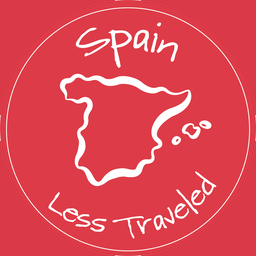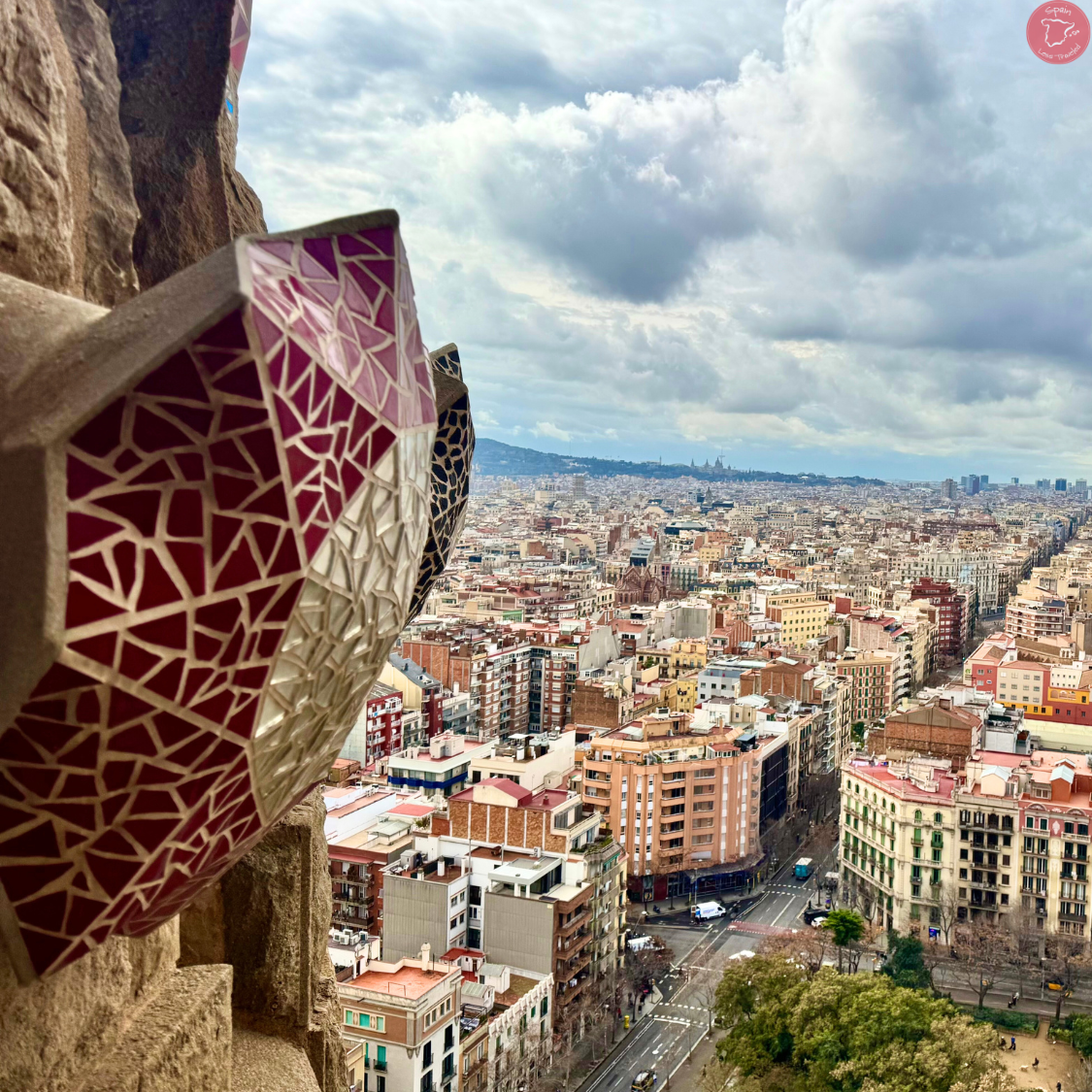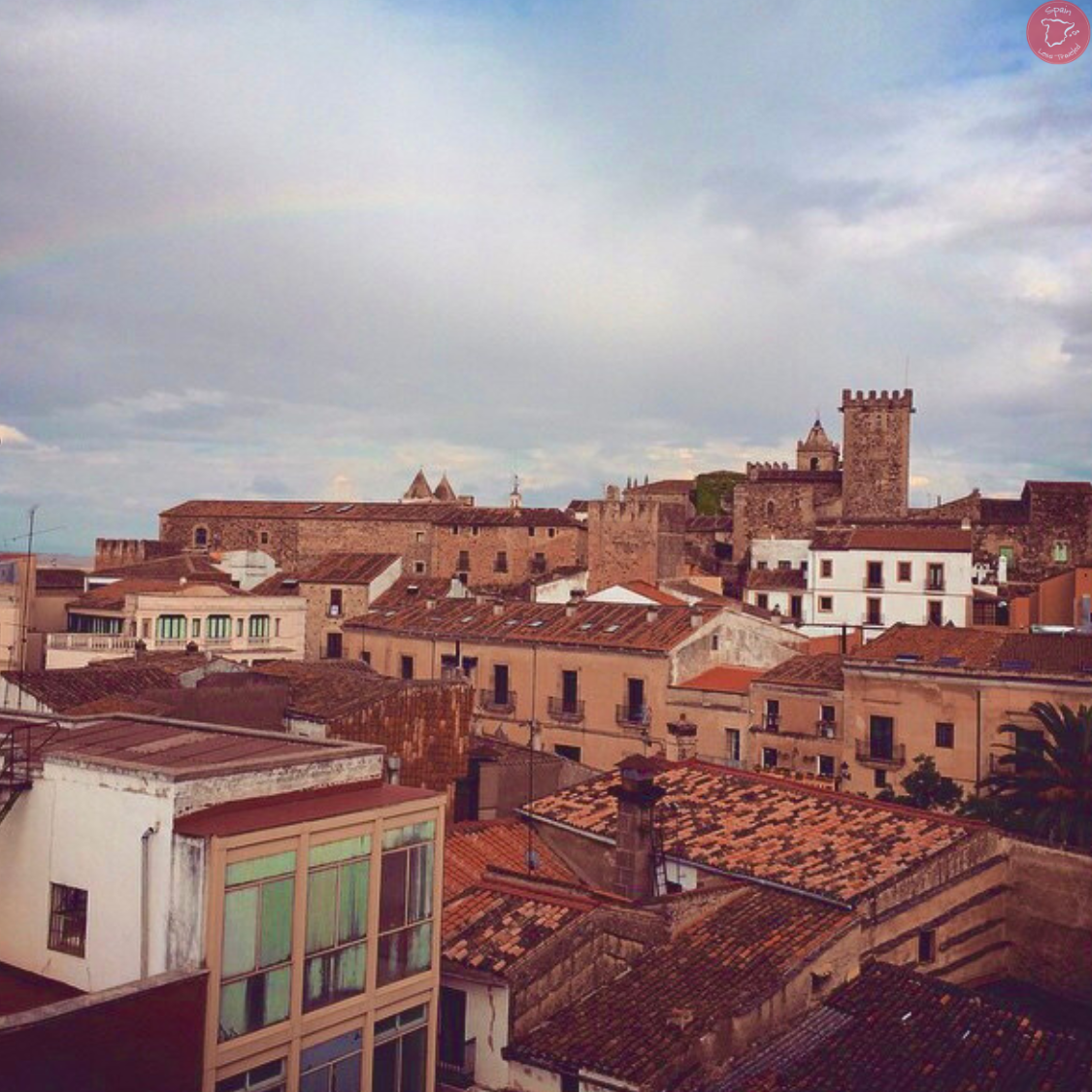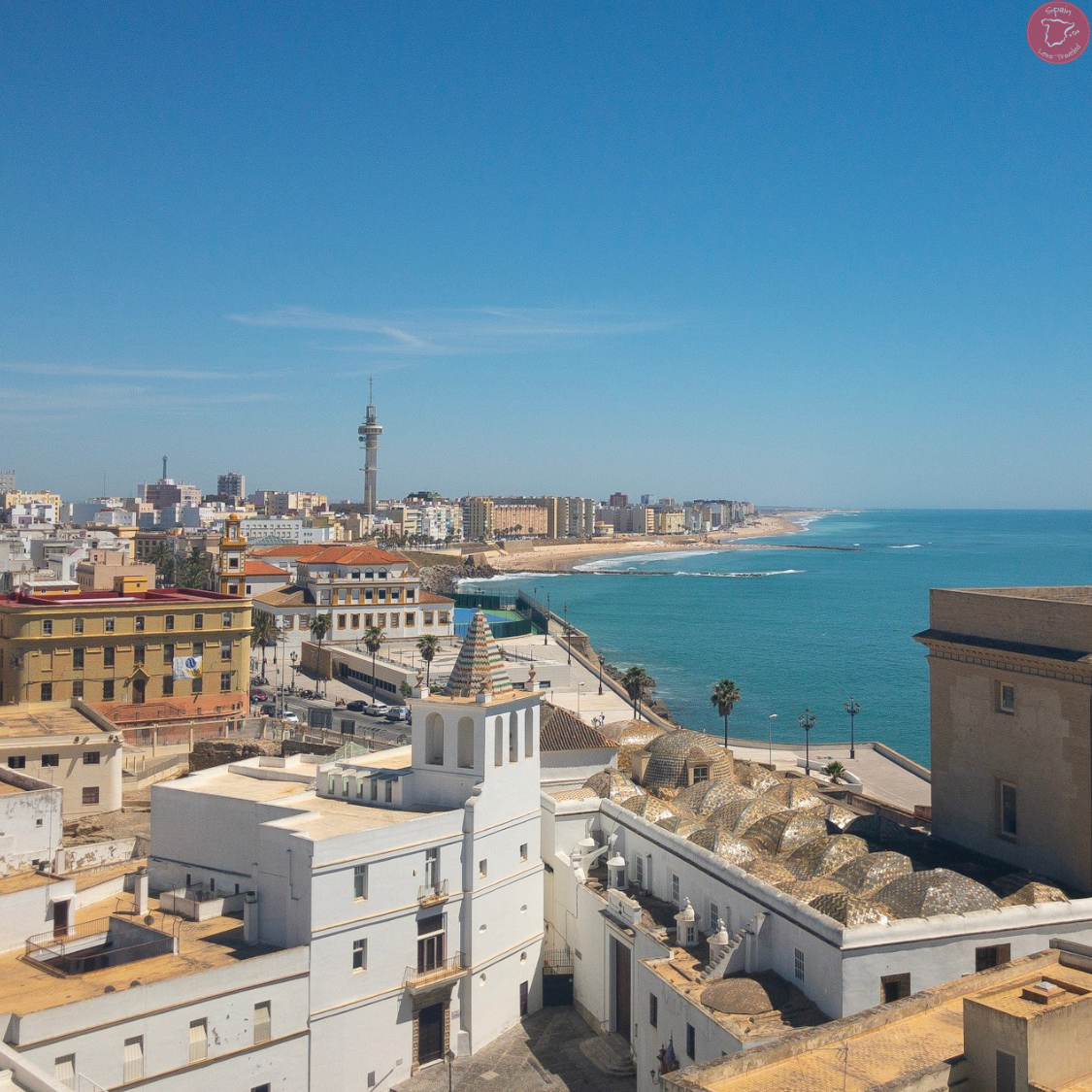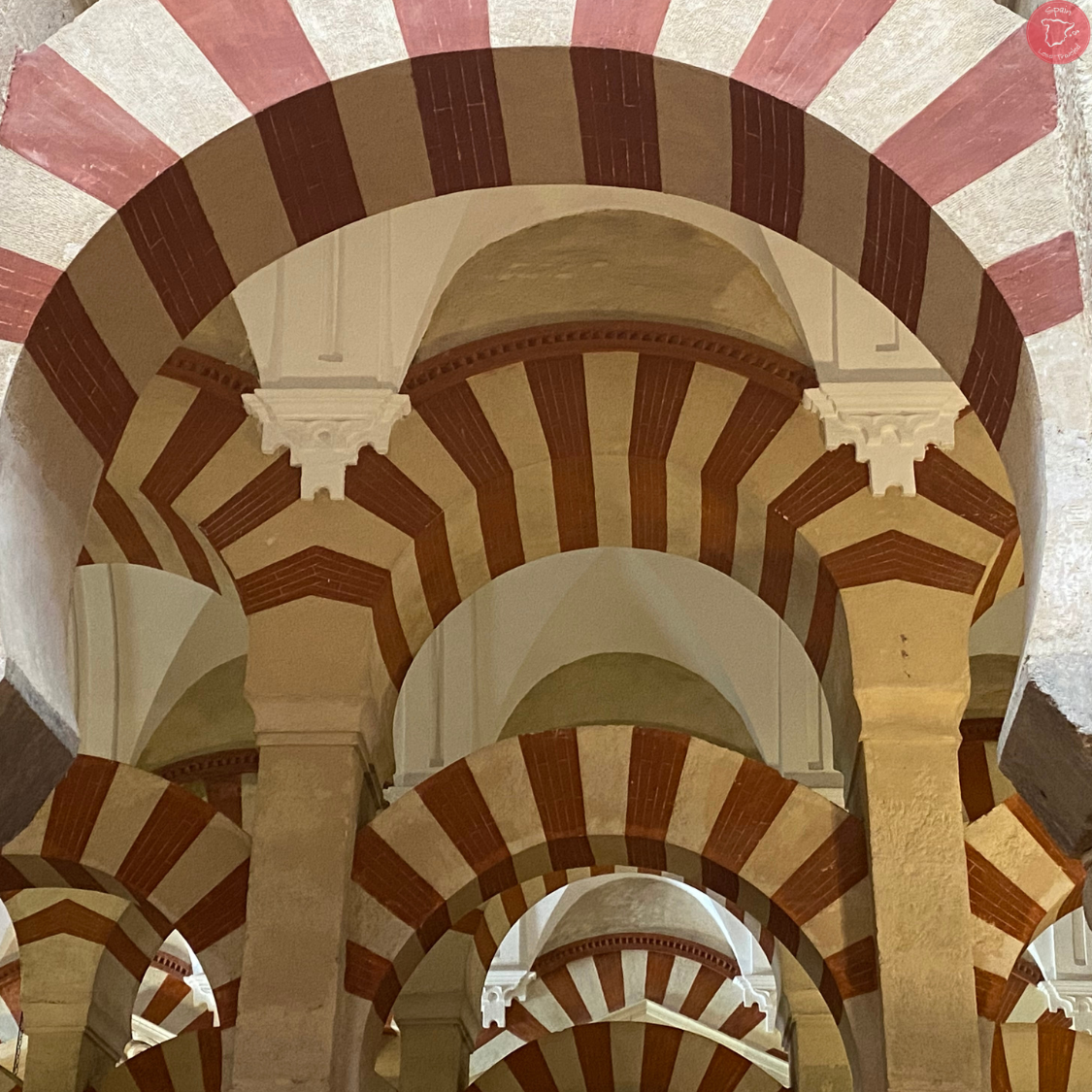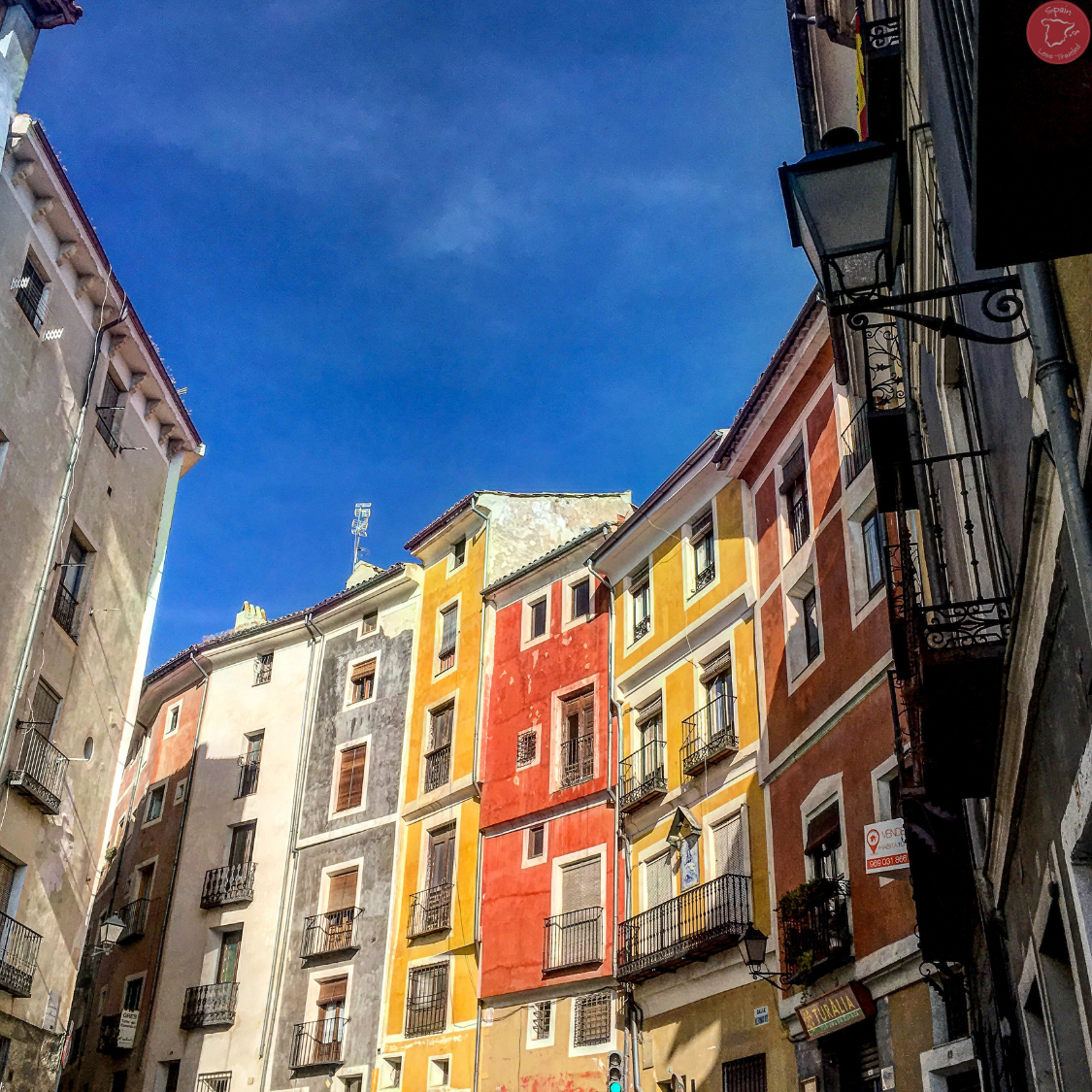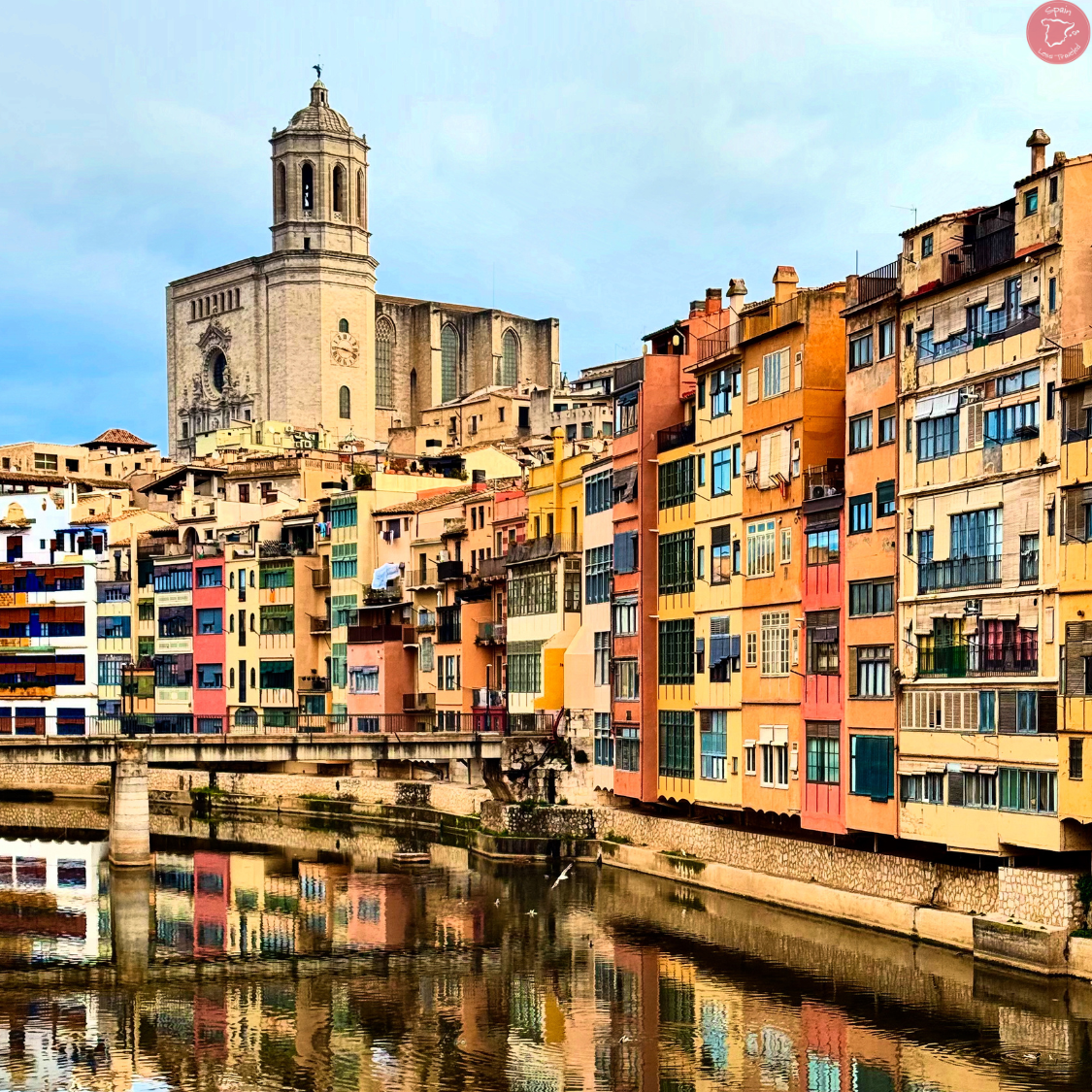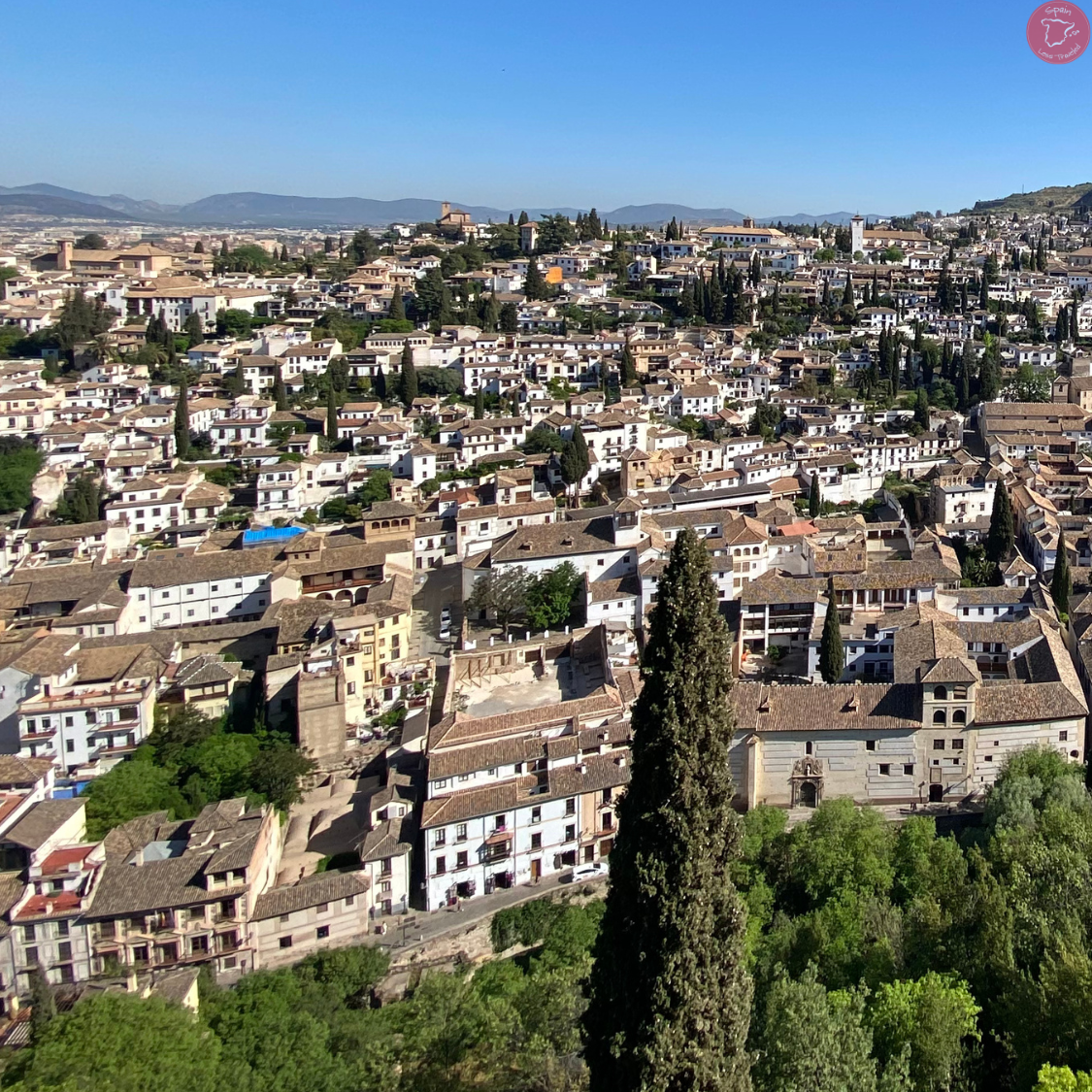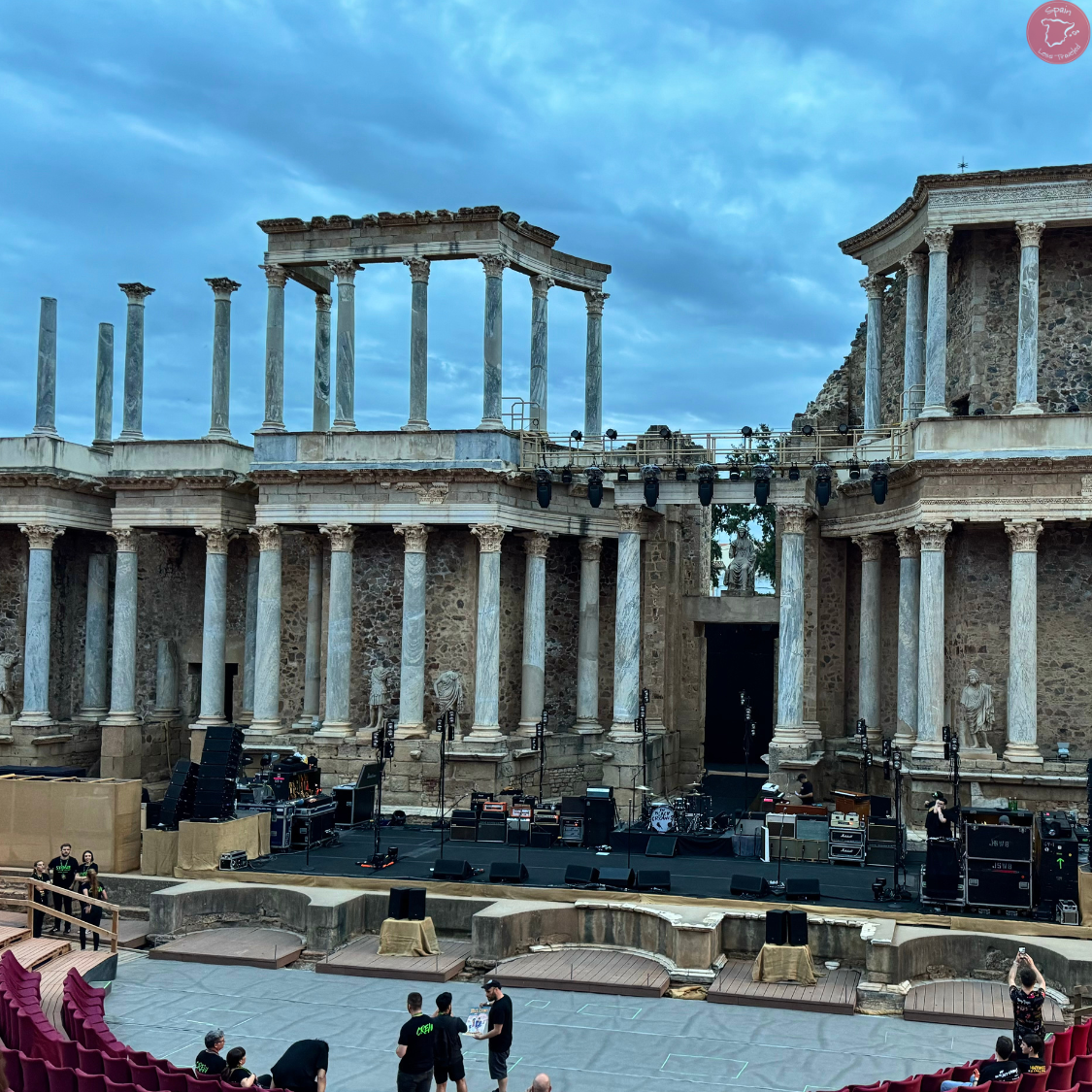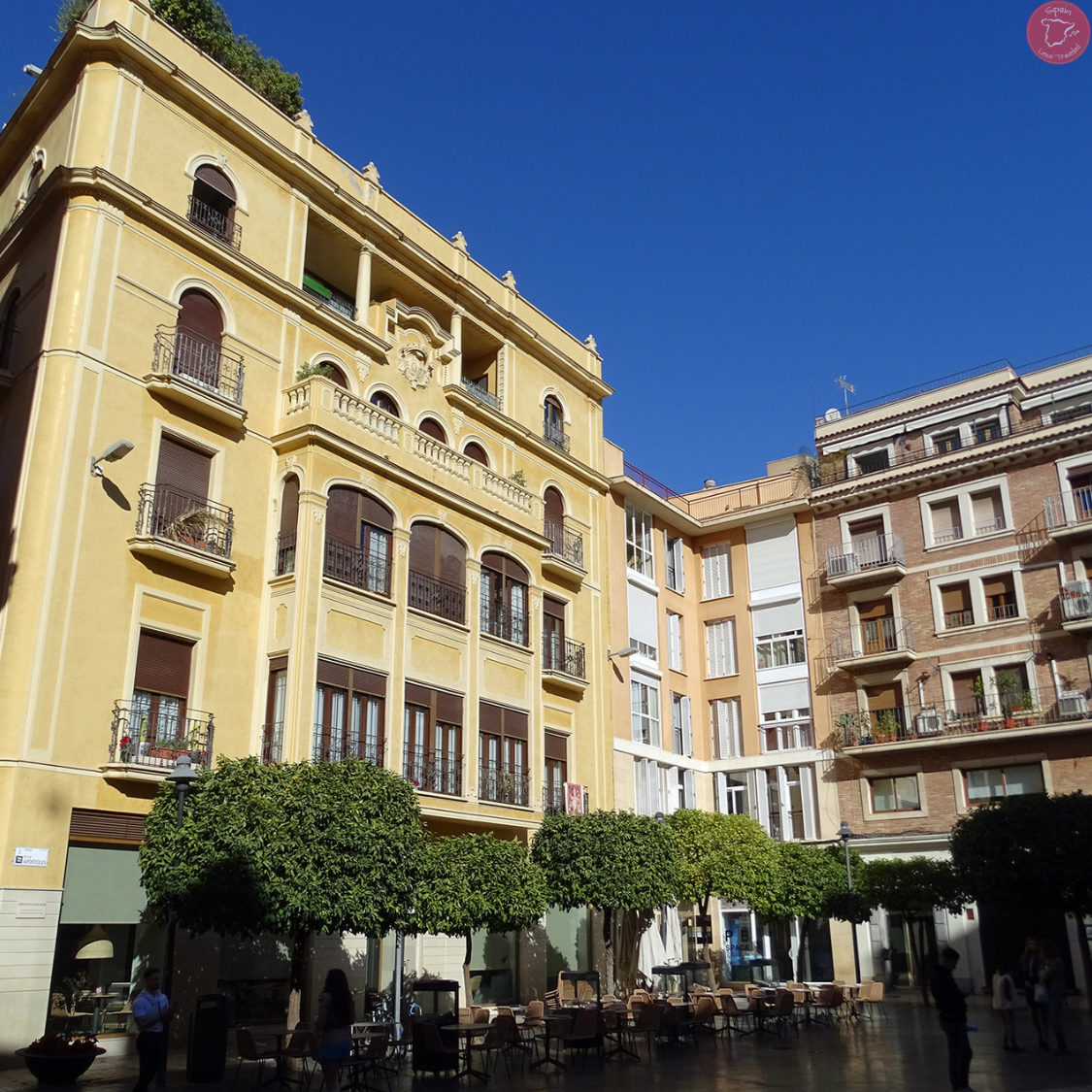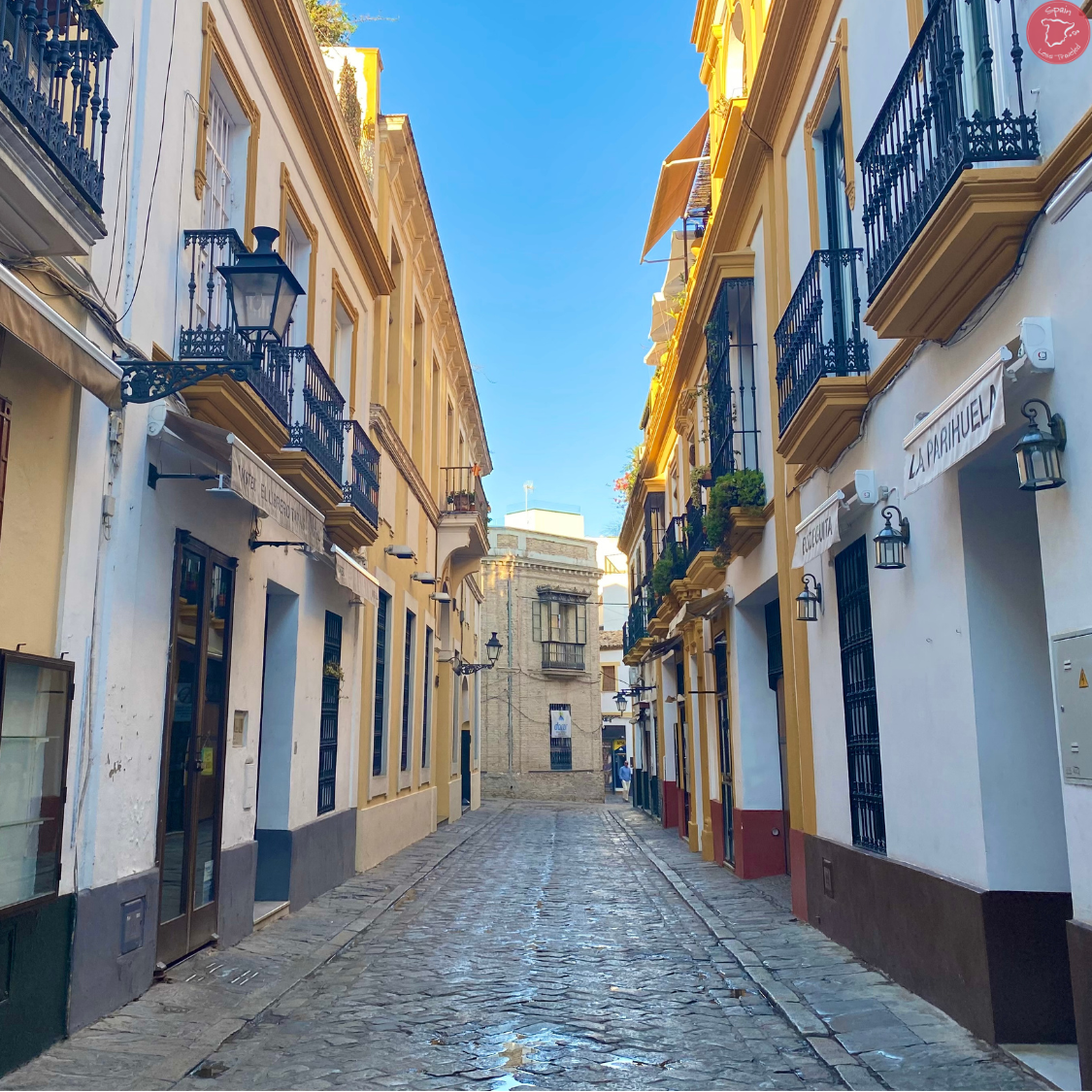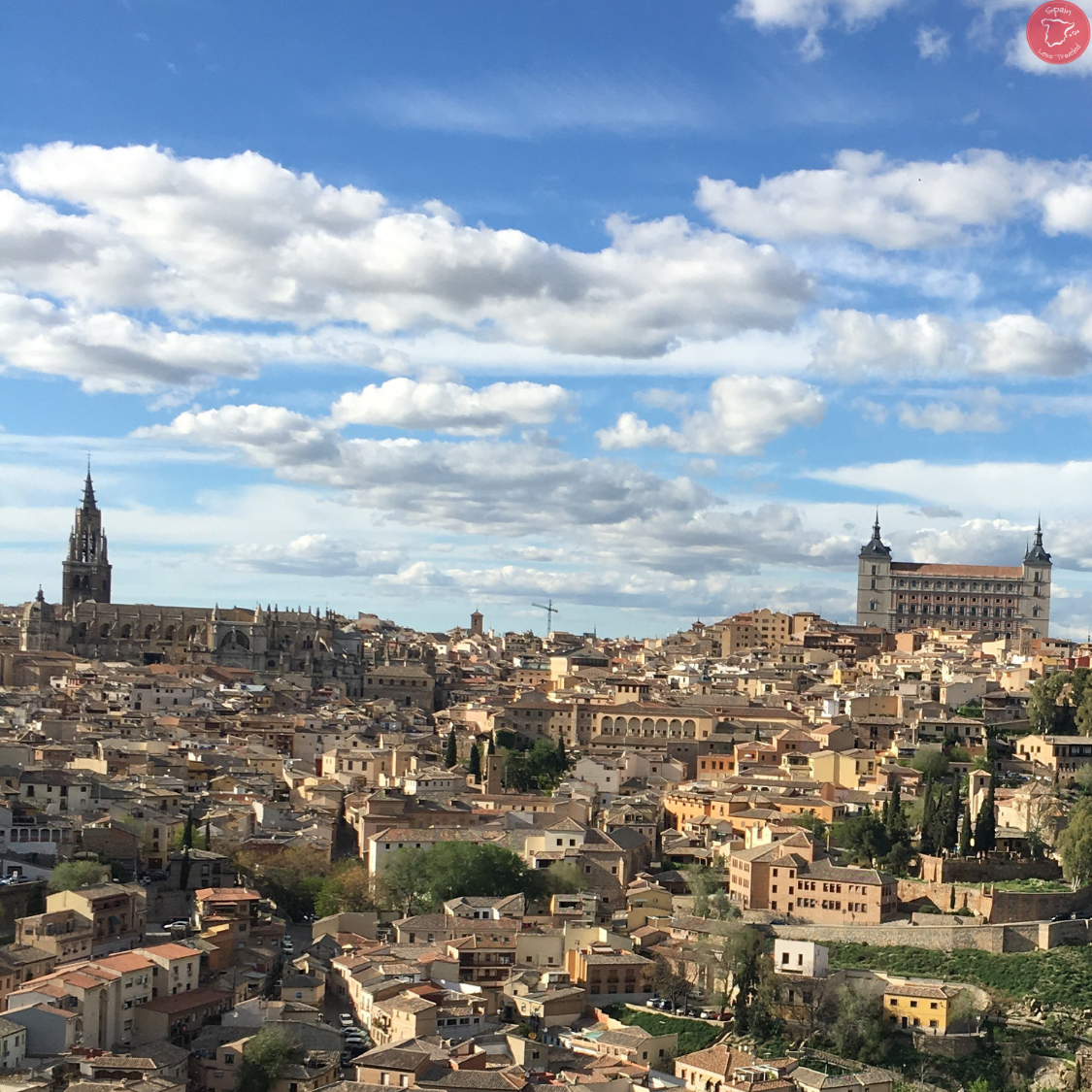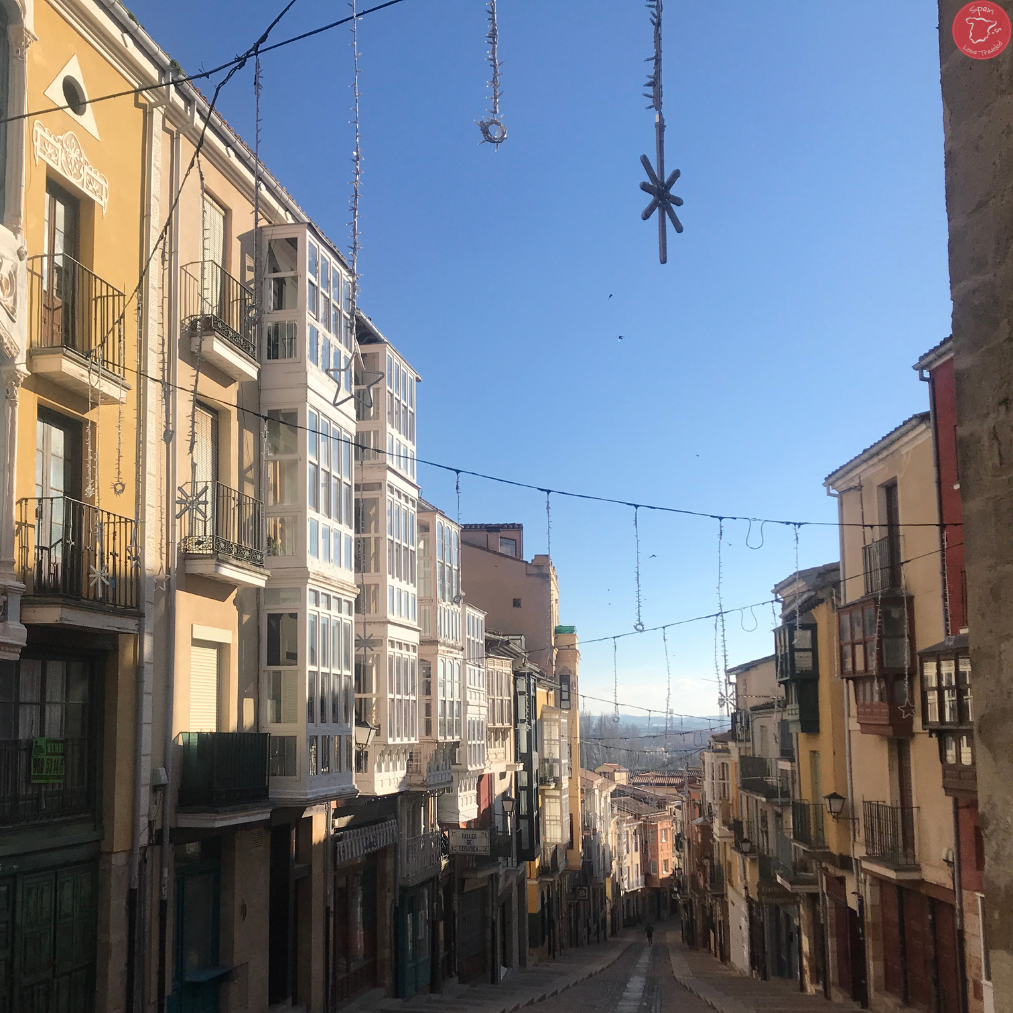Top 30+ cities in Spain A to Z
The highlights & best spots off-the-beaten path for travelers
Updated November, 2025.
All images are courtesy of the Spain Less Traveled team, unless otherwise stated.
This post contains some affiliate links. If you click on them and book a tour or experience, we may earn a small commission at no extra cost to you. Thank you for supporting our work through these links. If you'd like access to our handpicked recommendations just for you—including private tours and specific guides, exclusively for our clients—you’ll want to book one of our professional Spain travel planning services.
Zaragoza: the Capital of the Aragón Region is the 5th largest city in Spain.
Which cities in Spain should I visit?
Travelers planning a trip to Spain often wonder which cities in Spain they should visit. For American, Canadian, Australian, and New Zealand travelers seeking a blend of history, culture, and unique experiences, Spain offers a variety of destinations that go beyond the typical tourist spots.
Planning a trip to Spain from Australia or New Zealand? We've expanded our consultation hours to better serve travelers like you—making it easier to connect. Our Spain travel planning services include personalized consultations and custom itineraries designed around your interests, whether you're dreaming of wine regions, coastal escapes, or cultural deep-dives. Let us help you build a seamless, unforgettable Spanish adventure—on your schedule.
We at Spain Less Traveled truly believe that amazing Spain travel itineraries include a healthy mix of some of Spain’s thriving monumental larger cities as well as some of its quaint and charming small towns.
To inspire and give you some Spain travel tips and ideas, here is a list of our top 30+ cities in Spain. We’ve included some of our favorite regional and provincial capital cities as well as Madrid and Barcelona, from A to Z.
And if you need it broken down even further, check out our detailed guides: Discover Places, highlighting the top destinations and beyond!
Where is Madrid? Where is Extremadura? A map of Spain for travelers
But first, for a visual, here is a map of Spain. All of the top 30 cities to visit in Spain we listed are included below on this map. Now you do not need to guess “Where is Barcelona?” or “Where is Granada?” It is all here.
Map of Spain with regional and provincial borders, including the cities listed below. Image courtesy of VectorStock.
Our top cities in Spain (in alphabetical order)
Alicante
Alicante, Spain.
In alphabetical order, we start with Alicante, which is the capital of Alicante province in the Valencian community.
This pleasant city on Spain’s southeastern coast often gets a misplaced reputation due to the number of tourists and foreigners who live there. But with a little exploration, you can easily get past that. In fact, Alicante city remains very Spanish in nature.
Its centerpiece is Santa Bárbara Castle, one of the most visited castles in Spain. From the top, you can get an amazing view of the city below and the Mediterranean Sea.
Stroll along La Explanada de España, Alicante’s main promenade, constructed of millions of red, cream, and black tiles. The pattern resembles the rolling Mediterranean Sea waves. Along the path, you will often find market stalls.
And of course, a visit to the historic center is always worth it. Alicante’s historic center is known as “El Barrio.” It has all the charm of a typical historic center in Spain. Be sure to seek out El Carrer dels Bolets otherwise known as “mushroom street.” If you find it, you will see why it has that name!
A fun way to see Alicante is on two wheels through a city and beach bike tour. Seriously, this is such a perfect city to cycle!
If you are looking for beach time, Playa de San Juan is a long, sandy beach in the city itself. It is easy to get to by public transportation.
Almería
The port of Almería from the Alcazaba.
The city of Almeria Spain is not on most travelers’ list of Spanish cities to visit. But for those willing to venture off-the-beaten path to the southeastern corner of Andalucia, Almería city, is a diamond in the rough.
The cathedral of Almería was built on the site of a former mosque that was destroyed during an earthquake. Though built in the Gothic and Renaissance architectural styles, some Moorish influences can be seen.
The tapas scene in Almería, Spain is unique in that you get a choice in your free tapa. This is perfect for pickier eaters or those with dietary restrictions who want to discover Spain’s tapas scene, but without being presented with a plate of jamón. And the tapas are delicious, made with a variety of regional products fresh from the province’s farms.
But this Spanish city’s main draw is the Alcazaba, a fortress built by the Moors in the 1000s that looms above the city. Almería’s Alcazaba was said to be one of the largest in Spain at that time. Today, very little of the original construction remains, but you can still view part of the original walls, which are still intact. Check out our guide: Al-Ándalus, the wonders of Islamic art and architecture in Spain.
Almería is a port city. It is also a great place to soak up some beach time on the Mediterranean. For that head to Playa del Zapillo.
Barcelona
The stunning view from passion tower.
One of the highlights of Spain on many itineraries, the capital of the autonomous region of Cataluña, Barcelona, is the second largest of the cities in Spain. And it’s is the most popular with visitors. As it should be, at least for a few days.
Situated in northeastern Spain, on the Mediterranean sea, Barcelona’s seaside location, beautiful architecture, and unique culture make it a great city to visit.
Travelers to Spain should not miss Anton Gaudí’s unfinished masterpiece La Sagrada Familia. A basilica, but unlike anything you’ve ever seen, this is the signature of the Barcelona skyline. Lavish in its interior which is a brilliant mix of color, light, and shapes. Take in the details of this sacred space, and climb one of the towers for the views! Be sure to check out our guide all about how to visit the Sagrada Familia in Barcelona!
Along with La Sagrada Familia, be sure to check out all of the other modernist architecture gems spread around the city. Gaudí’s Casa Batlló and Casa Vicens are well worth a visit. If you really want to have a popular Gaudí site to yourself, be sure to book this VIP tour that gets you into Casa Botelló before it opens to the public!
Another true highlight of Barcelona is L’Hospital de la Santa Creu, designed by architect Lluis Domènech i Montaner, with its modernista mixed with medieval and Moorish architectural styles. Perfect for Modernista lovers who want to really check out the architecture without the huge crowds!
Be sure to spend some time wandering around Barcelona’s beloved Gothic Quarter too. Also in the old city is the Basilica of Santa Maria del Mar, with its amazing rooftop views. The Gothic Quarter is a fun area to take a walking tour.
Get out of the center and into some of Barcelona’s neighborhoods. Make sure to take some time to walk around the expansive Eixample neighborhood. The busy residential streets here are full of modernista architecture, typical to Barcelona. Browse the small shops and cute cafes in the Gràcia neighborhood.
Don’t linger on the famous Las Ramblas. But while you are there, check out La Boqueria market.
And for a more authentic Barcelona market experience, head to Mercat de San Antoni. Not only does the market have some great food stalls, but it is a real working market where the neighborhood shops for its essentials.
And if you know where to look, Barcelona is full of great restaurants serving up Catalan favorites. If you want to try some of the local cuisine, Agut and Can Cullertes are some top picks. All washed down with a glass of cava of course!
Barcelona has several urban beaches. For more information, check out our ultimate Barcelona travel guide!
“Karen’s suggestions for local guides that led us from food tastings, to bike excursions were the highlight and each guide felt like a friend. Honestly, her advice helped us navigate our way through Barcelona with little effort thanks to her planning advice prior to our trip! We will not hesitate to use Spain Less Traveled again for our next adventure to Spain!”
See more Client testimonials here.
Bilbao
Bilbao, Spain’s Guggenheim museum.
The northern industrial city of Bilbao is never on anyone’s list of the most beautiful cities in Spain. But there are still compelling reasons to include this city in the Basque Country on your Spain travel itinerary.
Bilbao put itself on the world art map in 1997 when the Guggenheim Museum opened. Housed in a building that is a modern architectural icon itself, this large museum has an impressive collection of modern art as well as world-class rotating exhibitions.
Be sure to walk around the grounds to see the giant spider sculpture and 12-meter tall “puppy” made entirely from begonias.
Another one for art lovers to add to the list of things to see in Bilbao is the Museo de Belles Artes (fine arts museum). Here you can find works by some of Spain’s most famous artists such as El Greco and Francisco Goya.
The Euskal Museoa (Basque museum) is the most comprehensive museum highlighting the unique culture, history, language and traditions of Basque Country. Learn more about the Basque people, and why this small sliver of Spain and France has always been their home.
Bilbao has a small old city (casco viejo), and in its heart is a Gothic cathedral. Foodies will want to head to Plaza Nueva or to Mercado de la Ribera (Ribera Market) for their fill of Basque pintxos. This is one of the top markets in Spain.
Across the river is Bilbao la Vieja, the trendy neighborhood full of street art, cafes, and even more pintxos.
One of the best ways to see Bilbao and learn all about the history and culture of this Basque City is to join a Bilbao highlights bike tour. Zipping around this hip city on two wheels is pure bliss!
Without a doubt Basque Country has some of the best food in Spain, and its largest city is no exception.
You might be interested in our in-depth guide to Northern Spain.
Cáceres
Cáceres, Spain’s medieval quarter with the hint of a rainbow.
Located in one of Spain’s least traveled autonomous region, Extremadura, Cáceres is one of the best examples of a well preserved medieval city. It is the capital of Cáceres province, one of two provinces in Extremadura and the northernmost one.
The entire historical center is well preserved, and you will literally think that you stepped back into time!
Thanks to the university of Extremadura, Cáceres is home to a large student population, giving this old medieval city a youthful vibe.
Cáceres is a wonderful place to sample some of Extremadura’s culinary delights such as jamón, local cheeses, and yes, wine too!
With easy access to some of Extremadura’s most scenic natural sites, Cáceres is considered to be one of Spain’s most beautiful cities. It is a secret well-kept with Spaniards, but is a city that sees very few foreign visitors.
We definitely recommend hiring a car to explore Extremadura. Here are more tips for getting around Spain.
Trujillo, a smaller city makes a nice day trip.
Our Full Spain Travel Consultation opens the door to Spain Less Traveled, where custom experiences replace tourist traps.
Cádiz
Cádiz Spain on a beautiful day.
Many say that Cádiz city, the capital of Cádiz province is Europe’s oldest city.
And visitors who detour to this corner of Southern Spain will truly feel the history.
The city’s centro historico has a charm that can only come with being one of the oldest European settlements. With sort of a Caribbean flavor, the sea walls and forts can easily remind visitors of La Habana, Cuba or San Juan, Puerto Rico.
At the center of the historic center is the cathedral, built in both Baroque and Neo-Classical styles. Don’t miss a climb up to the bell tower for the amazing views of Cádiz city, the port, and of course the Atlantic Ocean.
And Cádiz’s prime location on the Costa de la Luz (coast of the light) is perfect for beach-lovers.
Playa de la Caleta is one of the best urban beaches in Spain. Beachgoers will want to remember that this is the Atlantic Ocean and it can be downright windy at times. But this is why kite surfers love this part of Spain!
Cádiz is also known for its food. This corner of Andalucía produces some of Spain’s best seafood, wines, cheese, and olive oil. For a true treat on a budget, eat at the bar attached to El Faro, the Michelin Star restaurant.
With layers upon layers of a 3000+ year history, joining a historical walking tour of Cádiz is a great way to spend some time there!
Córdoba
The world-famous arches in Córdoba’s Mezquita Mayor.
Charming Córdoba city is one of the cities in Spain that is often included on Spain travel itineraries. It is one of Andalucía’s quaintest cities.
But one mistake visitors often make is simply doing a day trip to Córdoba from Seville. We love Córdoba and we recommended staying a few days to really get to know it!
Most Córdoba itineraries are centered around the Mezquita Mayor of Córdoba, and this draws many visitors to the city. Its iconic bright orange and white arches are world-famous. Don’t forget to look up too!
The Mezquita’s unique history blended with its present-day function makes it unforgettable. The Mezquita-Mayor is Córdoba’s working cathedral! Nowhere else will you see a Catholic chapel plopped right in the middle of a well-preserved former mosque. What you see today is an interesting mix of Moorish and Renaissance and Baroque-style architecture. No doubt that what remains of the Mosque is splendid.
When the orange trees are blooming, the whole area in the whole city is engulfed in a delightful smell of the flowers from Cordoba’s signature fruit.
Córdoba is very famous for its Jewish history as well and the well-preserved old Jewish quarter brings that history alive.
The old synagogue is open to visitors and is impressive. You can find Hebrew letters amongst the intricate Moorish-style carvings. Nearby, in Plaza de Maimónides, look for the statue honoring the famous Jewish philosopher and Torah-scholar, Moses Maimónides.
In fact, to really learn about the city’s Sephardic roots, it’s best to take a Jewish walking tour of Córdoba.
One of the top things to do in Spain, la Fiesta de los Patios is held in Córdoba every May. Travelers who plan to be in Córdoba for this beautiful festival honoring the incredible Andaluz-style gardens and courtyards will rave about it for years to come.
But even if you can’t plan your trip to Spain in May, you’re still in luck. Some of Córdoba’s patios can be visited year-round. Palacio de Viana has many patios and gardens. Also open year-round is the Trueque Cuatro, with its typical Cordobés patio.
Walk across the Guadalquivir river on the Roman Bridge, and take in the views from the other side.
Córdoba has some amazing local foods. On a hot summer day, nothing beats a bowl of salmorejo, a local, delicious, and refreshing cold tomato soup blended with bread. And lots and lots of local olive oil. You can even sample traditional Jewish food, Sephardic-style, at the restaurant Casa Mazal in the Judería.
Don’t rush Córdoba. Spend a few days here and give yourself time to get lost in its charming small streets, away from the main attractions. We promise, Córdoba will enchant you. Take it all in!
Cuenca
Colorful Cuenca Spain.
Cuenca, in Castilla-La Mancha is a popular day trip from Madrid, but travelers who opt to spend a night will be rewarded.
Famous for its Casas Cogladas (hanging houses), colorful architecture and charming plaza mayor with its Gothic-style cathedral, Cuenca is also a perfect destination for art lovers. The city’s Museo de Arte Abstracto is one of Spain’s best abstract art museums.
Make sure to take some time to hike up to the miradores (viewpoints) overlooking Cuenca for beautiful views!
And finally, if you do spend the night, one of the best paradores of Spain is in Cuenca! Housed in an old monastery with magnificent views, especially at night. Worth the splurge for sure!
Girona
Colorful houses on the Onyar River in Girona Spain.
Girona is another one of the Catalan cities in Spain, and is a favorite of many travelers.
Just a short high-speed train ride from Barcelona, this smaller city has a completely different vibe and is just so photogenic. It makes a wonderful day trip from Barcelona too!
Girona’s gothic quarter is up there for the best of Spain. Be sure to visit the cathedral. For those interested in Sephardic Spain, the city has a rich Jewish history with a well-preserved Judería (old Jewish neighborhood).
And climbing the old walls of the city is a must!
With so much colorful history, we recommend joining a small group walking tour of Girona.
Game of Thrones fans will love to recognize some of the filming sites in Girona. And the Girona area is one of the best places for mountain and gravel biking in the world!
Spending a few days in Girona is a great alternative to Barcelona, with plenty of Catalan culture but with fewer crowds.
Granada
Granada Spain’s old Moorish quarter (the Albaizyn).
One of the most beloved cities in Spain with locals and travelers alike, Granada is considered to be the most beautiful city in Spain by many. And it is easy to see why.
Shortly after arriving in Granada, you will soon get your first glimpse the Alhambra, guarding the city down below. Nestled in the foothills, it is unforgettable!
The Alhambra is a complex, a maze of gardens, fortress walls, forested paths, and a “little” summer palace. At the center is the Nazrid Palace, home to some of the last Moorish sultans of Spain. And it is fit for royalty indeed! Imagine a play of light and shadow adorned by colorful and geometrical tilework, all surrounded by detailed carvings with intricate patterns and Arabic letters. But you really just need to see it to understand how beautiful it is, and to have a strategy as to how to visit the Alhambra.
Or if you want to take all of the guess work and hassle of buying tickets to the Alhambra, we recommend joining a small group tour. This fully guided small group tour of the Alhambra only takes up to 10 people.
Beware of the large bus tours and not-so-small group tours. We really don’t recommend these! (Even better, book a consultation call with Spain Less Traveled to access our handpicked private guides!)
There’s more to Granada than the Alhambra.
Just below the Alhambra on the other side of the Darro river the Albaizyn is Granada’s old Moorish quarters. Visitors love walking its quaint cobblestone streets, adorned with whitewashed buildings. And the views from the top are amazing, especially the classic Granada view, with the Alhambra backdropped by the snowy Sierra Nevada mountains.
In the historic center, the bodies of King Ferdinand and Queen Isabella, the Catholic monarchs, are buried in the chapel of Granada’s cavernous Baroque and Renaissance-style cathedral.
If you want to catch a flamenco show, be sure to head to the caves of Sacromonte, where many say this signature and passionate Spanish dance and musical style was born. And for some of the best of Spain’s free tapas, you will want to hop from bar to bar on Calle Navas.
There are so many more things to do in Granada Spain. Make sure to carve out some time to just take in the beautiful city and enjoy it.
Jaén
Jaén, Spain is literally surrounded by olive trees!
Jaén, one of the eight provinces in Andalucía is famous for two things: 1. its olive trees and olive (and olive oil) production and 2. its abundance of castles, including some of the best castles in Spain. And the provincial capital, the city of Jaén has both. And so much more.
Jaén is worth the visit. It is one of Spain’s more off-the-beaten-path smaller cities that most travelers pass up. The small centro histórico is pleasant and at the center of it all is Jaén’s cathedral, built in Renaissance style.
The Parador in Santa Catalina castle is a great splurge - the views are impressive! You can truly spend the night in a castle!
Additionally, within the city limits you can find well preserved Arab baths, a small Judería (old Jewish neighborhood), and some wonderful food.
And yes, if you want to taste Spain’s liquid gold (olive oil), this is the province where some of the best olive oil in Spain (and even the world) comes from. There are opportunities to arrange for tastings and learn more about the different types as well as the production of olive oil.
Madrid
Madrid’s colorful neighborhoods.
Not only one of the greatest cities in Spain, but one of Europe’s best too, Spain’s capital, Madrid, is vibrant, friendly, livable, and unapologetically Spanish.
Don’t make one of the most common Spain travel mistakes which is simply using it as a stopover or a transit hub. Without a doubt, it is worth it to spend some time in Madrid to truly discover it.
The largest city in Spain with a population of over three million, it is impossible to even scratch the surface to summarize Madrid for travelers in a few small paragraphs. So here are just a fraction of our favorites. You can find even more in our Madrid travel guide.
Madrid is an art lovers’ paradise. Home to three world-class art museums and many smaller ones, you can spend weeks just visiting Madrid’s museums.
The Prado, the biggest of all houses an impressive collection of Spanish art including numerous notable works by Francisco Goya and Diego Velazquez. And the art extends beyond Spain. Flemish painter Hieronymus Bosch’s Garden of Earthly delights is part of the permanent collection. If you are a massive art lover (or don’t enjoy art museums with crowds), you can even do a VIP tour of the Prado before it opens! Being in such an impressive museum with no one else is one of those bucket list items for many!
For those interested in contemporary Spanish art, there’s the Reina Sofía museum. Amongst its impressive collection detailing important events in Spanish history is Pablo Picasso’s massive painting Guernica. Don’t just look. Study and learn. Without even being there in person, Picasso managed to depict a very grim day during the Spanish Civil War. The museum also houses other Picassos as well as works by Joan Miró and Salvador Dalí.
There are even more wonderful museums in Madrid that cover a wide range of themes and topics. From local history to trains and metro lines to archeology, there’s a museum for it in Madrid!
Paris has Versailles and Madrid has el Palacio Real, the Royal Palace. The first Bourbon king of Spain, Felipe the Fifth’s goal was to build an over-the-top lavish palace to put some of its other European counterparts to shame. And so this royal residence in the heart of Madrid was constructed. No longer a residence, but still part of the crown, the palace is now open to the public except in the event when the royal family needs it. Follow the route through the maze of rooms fit for a king.
Madrid is a city with a lot of green space, and Retiro Park is one of the most urban parks in Europe. Do as the locals do, go for a Sunday stroll. Or perhaps rent a small paddle boat at the park’s man-made lake. Retiro is full of surprises.
Another surprise of Madrid can be found in another park, Parque de Oeste. At the top is Templo de Debod, one of the only authentic Egyptian temples outside of Egypt. This is also a great place for a signature Madrid sunset.
Like most cities in Spain, Madrid is full of plazas, from little local squares to grand plazas lined with impressive buildings. Plaza Mayor is the oldest and very popular with visitors. But to catch a glimpse of Madrileño life at a more local plaza, head to Plaza de Olavide, one of Madrid’s most beautiful neighborhood gathering spots.
And then of course there is the food. Madrid is a city for eating. From the popular tapas bars on Cava Baja to the more trendy and up and coming ones of Calle de Ibiza and Calle de Pozano to Michelin star restaurants to local markets, where you can taste some of the freshest food Madrid has to offer, it is totally possible to eat your way through Madrid.
Spend a lifetime in Madrid and you will always discover more. Take our advice: make sure to devote ample time to it on your Spain travel itinerary.
Looking for places in Madrid that the average visitor doesn’t see? Be sure to also check out our guide to Madrid off the beaten path!
Málaga
The views of Málaga city from a rooftop!
The capital city of Málaga province often gets a bad reputation with travelers because of the resorts on the nearby Costa del Sol.
But Málaga city is one of the best cities in Spain, and contrary to its reputation, very Spanish. And even more so, very Andaluz.
The second-largest city in Andalucía (and the sixth-largest in Spain) Málaga’s coastal location makes it pleasant year-round. With an upbeat, almost tropical vibe, Málaga has been an inspiration for artists throughout the ages. One of the coolest ways to see the city is on a vintage bike tour.
Pablo Picasso was born here, and to this day the city is great for art-lovers. There are several art museums in Málaga, including (of course) a Picasso museum. Many of the paintings were donated or are on loan by the Picasso family. Visitors are often surprised to find a small branch of the Pompidou center. Housed underneath a colorful glass cube by the port, it features paintings by (mostly) 19th and 20th-century Spanish artists. The Museo de Málaga (museum of Málaga) and Carmen Thyssen museums are even more places to see art in Málaga!
Málaga also has a strong cinematic tradition and is often a filming location for Spanish movies. Antonio Banderas was born in Málaga (and still lives there). His El Camino de los ingleses was shot and directed in his beloved city.
Like many cities in Spain that used to be Moorish-ruled, Málaga also has a great Moorish fortress and castle.
On the top of the hill rising over the center of town is the castle, Castillo de Gibralfaro. Unfortunately, not much of the castle’s interior was preserved. But you can still walk the grounds and of course, take in the beautiful view of Málaga. For those interested, there is also a small military museum inside.
Climbing up the hill leading up to the castle is the Alcazaba, the old city walls and fortress. Full of beautiful gardens and fountains, head up the path that zig-zags through rows of orange trees, enjoying the colorful vegetation and greenery.
Málaga’s history dates back to the Romans, evident by the Roman theater right at the edge of the historic center.
Nearby, in the historic center, facing the Plaza del Obispo is Málaga’s grand Baroque cathedral. Originally a mosque, but like many others, transformed into a place for Catholic worship. The reconstruction took over 200 years, and very little of the original mosque remains.
Málaga’s central market, Mercado Atarazanas is a great spot to buy specialties local to Málaga. The province produces a variety of olive oils as well as sweet wines. Seafood lovers will want to make sure to find a table at a chiringuito, a beachside shack that serves the freshest catch of the day. And look for Málaga staple Ajo Blanco on any menu at most of Málaga’s tapas bars. It’s a cold garlicky soup, so refreshing on a summer day.
With stretches of coastline, Málaga is a great spot to get some beach time. Malagueta is the most popular and most central of the urban beaches. But for fewer crowds, head in either direction. No matter which beach you choose, find a table at a chiringuito (beachside restaurant) and enjoy some of Málaga’s seafood specialties.
Whatever you do, don’t forget to carve out time for Málaga city on your Spain travel itinerary. It really is one of Spain’s biggest surprises.
Looking for more? There are also a plethora of amazing day trips from Málaga.
Mérida
The Roman Theater in Mérida gets ready for a concert
The ancient city of Mérida is the capital of Extremadura, which offers visitors a taste of old-timey Spain.
This city of Spain is best known for its extensive Roman ruins, which are a UNESCO World Heritage Site. Most impressive is the Roman theater. If you are lucky you can even catch a performance there. Imagine watching a play surrounded by that much history!
Some of the other highlights include the Roman bridge, circus, Arco de Trajano (Trojan arch), and Templo de Diana (Temple of Diana). Simply wander around Mérida, and you’re bound to find ruins in the most unexpected of places. While you can see some of the Roman sites from the outside, some are best viewed by going in.
You can buy a pass for all of the attractions or entries for the individual sites depending on how much time you have.
Mérida makes for a great base to explore more of Extremadura too, especially the southern part!
Short on time, big on adventure? Our Mini Spain Travel Consultation helps you uncover highlights of Spain Less Traveled—fast, easy, and tailored to you.
Murcia
One of Murcia’s quaint plazas with a clear blue sky!
Murcia is one of those larger cities in Spain that is not on most visitors’ radars. But that is a shame and we think that it should be.
Inland, in a sunny area of Murcia province, this boisterous regional capital is full of local life. Visitors are always charmed by the thick regional accent, which many Spaniards from other parts of Spain have trouble understanding.
The Cathedral of Murcia, an impressive mixture of Gothic, Baroque, Neoclassic, and Renaissance styles is one of the most architecturally interesting of the Spanish cathedrals.
But Murcia is best known for its friendly locals and lively lifestyle. The areas between the Ayuntamiento (city hall) and Cathedral area all the way to Plaza Circular are a great place to catch some local vibes. And historically, Plaza de las Flores, where the bars are always full of locals drinking the regional beer, Estrella de Levante, is where the action is centered.
And Murcia is a must for culinary lovers. Murcia is one of the hidden and up-and-coming gastronomical capitals of Spain. With so many locally produced specialties, it is no surprise that Murcia is quickly becoming a favorite for foodies
The best time to visit Murcia is the time around the Tuesday after Easter, when every year the city hosts its annual Bando de la Huerta festival, one of our favorite festivals in Spain, showcasing traditions from the past while transforming the center into a giant street party.
Ourense
Ourense Spain historic center, walking distance to natural hot springs!
In the green north, Ourense, one of the provincial capitals of the Galicia region, always delights travelers with its charm.
Not as well known as some of the other Galician cities such as Santiago de Compostela (see below), Ourense is located on the Mino river. And perhaps it is one of the only cities in Spain where you can find natural hot springs a stones’ throw from the center such as O Tinteiro and Chavasqueira. So therapeutic and relaxing!
Some of the other top things to do in Ourense include wandering around the pleasant historic center. At the center of it all is the Ourense Cathedral, built in the 12th century. Ourense’s main square, plaza mayor (or praza maior as they say in Gallego) is surrounded by old architecture typical of Galician cities.
Galicia is one of the regions of Spain best known for its food, and you can try so much of it in Ourense. For a small city, the food scene here is quite impressive.
You can find Galician delights such as seafood from the coastal regions of Galicia, fresh produce, and local meat dishes at any of the tapas bars lining the quaint alleyways. And don’t forget to stop by the Praza de Abastos (the central market) to bring some local delicacies such as cheese and wine from Galicia home with you!
Check out our essential guide to drinking wine in Spain.
“Travel along the northern coast of Spain is a favorite of mine — especially for summer travel where the temperatures are usually cooler than the rest of the country.”
Read the full article in CNN Hidden Spain Where Touists are Welcome here.
See more press mentions here.
Oviedo
One of Oviedo’s pre-Romanesque churches, Santa María del Naranco.
Speaking of the north of Spain and speaking of food, next on our list of the best cities in Spain is Oviedo. The region just east of Galicia, Asturias has a unique culture, beautiful landscapes, a culinary tradition of its own. And the capital city, Oviedo is at the center of it all.
Oviedo’s historic center is lively and charming. Full of colorful buildings, oh and with a cathedral originally constructed in the 9th century, it is no wonder why people fall in love with Oviedo’s old town.
Oviedo is rich in history, dating back to the pre-historic era found in cave art. To learn more about all of this, be sure to visit the city’s archeology museum, housed in an old monastery. Or better yet, take a private Oviedo walking tour. You will really learn about the history of this amazing city!
Like the rest of the north, Asturias has a deep culinary tradition. Here you will find some of the heartiest foods in Spain. Heavy on beef, stews, cheeses, and seafood, the best place to try some of Asturias’ specialties is at the restaurants that line Calle Gascona. The menus are extensive, and the portions tend to be huge, so go on an empty stomach.
Pay close attention to how they traditionally pour the Sidra (hard cider), made from apples from the woods of Asturias. All proper Asturian meals are accompanied by several bottles of this crisp drink!
The biggest surprise in Oviedo is discovering the pre-Romanesque temples in the hills just outside of town. Travel back to the dark ages at the churches of Santa María del Naranco and San Julián de los Prado, which are so unique to Oviedo and this part of Spain.
If you grew up reading the Argentine comic Mafalda, you will be delighted to find a sculpture of the heroine herself in the Parque de San Francisco.
And travelers will want to have their photo taken by the Estatua del Viajero (statue of the traveler), the outdoor sculpture in Plaza de Porlier. Oviedo is a favorite of travelers and the sculpture solidifies that!
Palma de Mallorca
Palma de Mallorca.
Palma de Mallorca is one of the cities in Spain that is located on an island. Mallorca is the biggest of the Balearic Islands in the middle of the Mediterranean Sea.
Much more than just a resort city on an island, Palma de Mallorca is packed with history. Right away visitors will notice the cathedral, one of the city’s most well-known landmarks. The interior was designed by Antoni Gaudí along with famous contemporary Spanish artist Miquel Barceló. The views from the cathedral’s rooftop are well-worth the effort to climb up.
Just across from the cathedral is another of the top things to do in Palma de Mallorca, is the Palau de l'Almudaina (the royal palace). It was originally a Moorish fort, and there are many remnants of the Moorish-style architecture. Later it was converted to a palace for Mallorcan royals. On occasion, the Spanish royal family drops in on their palace in Mallorca, but when they’re not using it, the palace is open to the public.
A really fun way to visit Palma de Mallorca is to take an ebike tour of the city. You will learn a lot and have a fantastic time biking through this Mediterranean city.
Be sure to visit the castle, Castell de Bellver, one of Europe’s only circular castles. And spend time wandering through Palma de Mallorca’s historic center.
The city has a well-preserved Judería, making it one of the best cities in Spain to see its Sephardic heritage. Unique only to Mallorca, there is an active community of practicing Jews, ancestors of Mallorcan Jews who were forced to convert. For those interested in Jewish Spain, a guided walking tour of the Judería is a must!
There are so many reasons to visit the island of Mallorca. And when you do, be sure to get some city time in Palma de Mallorca.
Salamanca
Salamanca, Spain from the roof of the new cathedral.
Salamanca is a lively university city with a youthful and fun vibe. The capital city of Salamanca province in Castilla y León, it has been described as magical. And it is no wonder. Especially if you are lucky enough to see all of the monuments lit up at night.
Salamanca has two cathedrals, Catedral Vieja, the old one and la Nueva, “new” one. And by “new” we mean construction started on it in the 1500s. La Nueva is a huge Gothic-style cathedral that you can not miss as it dominates Salamanca’s historic center. Adjacent to it is Catedral Vieja, which is one of the best examples of Romanesque architecture in Spain. Make sure to check out the views from the bell tower in La Nueva.
Ask many Spaniards, and they will tell you that Salamanca has the most beautiful plaza mayor in all of Spain. Once where bullfights took place, today Salamanca’s main plaza is lined with cafes and grand Baroque architecture. Wander around the quaint streets and narrow alleyways that lead in all directions.
The University of Salamanca is one of the best universities in Spain to this day. Students come from all over the world to study here, as soon as you see the campus you will know why. One of the oldest universities in the world, the buildings tell so much history. Be sure to visit the library to admire the unique plateresque architecture. And if you need some good luck, try to find the frog amongst the intricate carvings on the facade of the university’s main building. Legend has it that if you spot it, you will have good luck, especially academically, for years to come.
Salamanca also has a notable art deco and art nouveau museum that is housed in a modernista style building. Just like Barcelona! The collection of stained-glass pieces is quite impressive. Definitely add it to your list if you are an art-lover.
For those reasons and more, it is not hard to see why Salamanca is one of the best cities in Spain to visit!
San Sebastián
Plaza de la Constitución, San Sebastián Spain.
Next up on our list of some of our favorite cities in Spain, we head back over to a region internationally celebrated for its culinary traditions: Basque Country. Ask any foodie to name their favorite cities; San Sebastián without a doubt makes that list.
San Sebastián is also one of the most beautiful cities in Spain. Its seafront location and quaint historic center, with street names in the Basque language, give it a feel unlike nowhere else in Spain. Food is the center of life here, and everywhere you turn this is evident.
Come on an empty stomach. For starters you will want to make sure to get your full of pintxos, Basque “tapas” that are much larger, filling, packed with local ingredients, and usually held together by a stick. Save all of those sticks as you sample all of the varieties at any local bar. In the end, the bill will be determined by the number of sticks.
San Sebastían also has some of the most Michelin-starred restaurants in the world! You will need to book a table at some of the more popular ones like Arzak months out. These are not cheap eats like the pintxo bars, but for foodies, it is worth the splurge.
Make sure to save room for the Basque-style cheesecake from La Viña. Totally worth the calories! And wash it all down with a glass of txakoli, a crispy dry sparkling wine from the vineyards of Basque Country.
San Sebastián is the best place in Spain to literally eat your way through. And a pintxos tour of San Sebastián is a great way to kick start this mission while learning about the rich Basque culinary traditions.
Or, if you’d prefer a hands on experience, a San Sebastián cooking class will help you bring the flavors of Basque Country home with you!
Of course, there is more than food in San Sebastián. Those interested in the unique Basque history and culture will want to stop by the San Telmo Museoa, a museum that preserves and brings to life Basque traditions. The city’s main plaza, Plaza de la Constitución was once used as a bullring. And the balconies of the buildings lining the plaza were where spectators sat. Today it is a pleasant central square.
On the windy Cantabrian Sea, San Sebastián’s Playa la Concha is often cited as the most beautiful urban beach in all of Europe. Come for the food and stay for the beach!
Santander
Centro Botín in Santander Spain.
Stately Santander is the capital of Cantabria, a small and beautiful region in the north of Spain.
The city is nestled in one of the most beautiful harbors in the world. Although its historical center was devastated by a fire in 1941, Santander kept its charm intact, with lovely architecture, gorgeous urban beaches, and lively culture and nightlife. It’s also one of the ‘smartest’ cities in Europe.
Santander needs to be on your list of cities in Spain to visit if you are an art lover. Centro Botín is located on Santander’s sea promenade. Housed in a beautiful modern building and it floats over the sea, offering amazing views of the city. The center has a rotating schedule of temporary exhibitions by world class modern artists.
If you are attracted to royalty, a visit to the Magdalena Palace (Palacio de la Magdalena) is a must! Constructed in the early 1900s as a seasonal home for Spanish royalty, the palace was declared a historical monument in 1982 and is open to visitors.
For those seeking some beach time, you can find it at Playa del Sardinero, a beautiful beach within the city limits.
And be sure to try Regma ice cream, local to Santander, which many say is the best ice cream in Spain.
Santiago de Compostela
Santiago de Compostela’s magnificent cathedral.
Also located in dreamy green Galicia, Santiago de Compostela is one of the favorite cities in Spain for Camino de Santiago pilgrims as well as travelers to the region.
The traditional end of the Camino, pilgrims arrive at the city’s impressive cathedral after walking from as far as France, Portugal, or even further. Be sure to visit the cathedral, built in Romanesque, Gothic, and Baroque architectural styles, even if you are not a pilgrim. And sit in the square and watch the pilgrims come in, finishing up their sacred trek.
Nearby, there is also a Museum of Pilgrimage and Santiago to learn more about the pilgrimage.
Along with Asturias and Basque Country, Galicia produces some of the best food in Spain. Santiago de Compostela’s central market, Mercado de Abastos is a great place to sample some of the regional specialties. Check out our guide: shopping in Spain.
And if you’re spending the night in Santiago de Compostela, it’s well worth it to splurge on the city’s parador. Originally a royal hospital, situated in the Praza do Obradoiro with stunning views of the cathedral, this luxurious hotel is one of the most special in all of Spain.
Segovia
Segovia’s impressive aqueduct.
For another fantastic day trip from Madrid, head north to Segovia.
The main draw here is the incredibly well-preserved Roman aqueduct that makes visiting Segovia a true treat and one of the most unique cities in Spain. It is one of those things that you need to see for your self to truly appreciate the magnitude of it. A UNESCO World Heritage Site, the aqueduct runs right through the historic center of Segovia. You can’t miss it!
Some say Walt Disney’s main inspiration for Cinderella’s castle was Segovia’s Alcázar. Once a fort, then a palace, then a prison, and now a museum, the views of Segovia from the top of the Alcázar are impressive.
All roads lead to Segovia’s impressive Gothic cathedral and Plaza Mayor. Segovia also has a Jewish past. Iglesia del Corpus Christi used to be the old main synagogue. Nearby, there is also a small Jewish Quarter (Judería) visitors’ center that keeps odd hours.
Lovers of pork should make sure to enjoy the region’s local specialty for lunch, cochinillo, suckling baby pig so tender that it can be cut with a plate. Definitely not vegetarian-friendly!
For a truly special experience, consider splurging on a Segovia hot air ballon ride. Soar over the monuments of this magnificent city and celebrate with a cava toast!
Seville
Take time to really explore the streets of Seville Spain.
The capital and largest city of Andalucía, passionate Sevilla (Seville) entices visitors from all over the world. It is undoubtedly on every traveler’s Spain bucket list, as it should be!
Seville is one of the largest cities in Spain, and here you will find a buzzing metropolis that is undeniably Andaluz. Just like with Madrid, visitors should spend time really getting to know Seville. That means plenty of downtime just to get lost in its historic street or just to enjoy an afternoon drink at an outdoor cafe taking it all in.
Of course, Seville has many monumental sights too. The Cathedral of Seville is an architecture lover’s dream: the largest Gothic cathedral in the world as well as a UNESCO World Heritage Site. And like the cathedral of Córdoba, Seville’s was built on the site of an old mosque after the city fell to the Christians.
Very little of the original mosque was preserved, but the Giralda (bell tower) was the minaret of the Mosque. And visitors wanting an epic view of Seville can climb to the top.
The cathedral’s Patio de los Naranjos, the courtyard of orange trees is a Moorish style courtyard filled with orange trees. If you are lucky enough to visit Seville in the Spring (March-May) when the orange blossoms are blooming, their delightful sultry scent will engulf you, not only here but all over the city.
Another one of the main sights of Seville, the mudéjar-style Alcazar must be on your Seville Spain travel itinerary as well. Built for the Catholic King Pedro the palace’s tile work, arches, and intricate carvings are exquisite. If you really want to have it to yourself, you can book a tour of the Alcázar before it opens to the public. The only people there would be you and your small group, and that’s what palace fairy tales are made of!
And if palaces are your thing Seville has you covered. Another must-see is Casa de Pilatos. It’s no wonder why Spanish royalty loves Seville.
Popular with photographers (and Instagrammers) Plaza de España, has a “river” that runs through it. You can rent a boat! It is an impressive monument constructed in 1928 for the Ibero-American Exposition of 1929. Be sure to walk around and have a look at the ceramic tile work in homage to each Spanish province. It’s a trip around the best of Spain, all without leaving Seville’s Plaza de España!
And if you are looking to see a flamenco show in Spain, Seville is up there with Granada for the best of Spain for that! Even better, book a tapas crawl and flamenco show in the Seville. This is basically the quintessential Seville evening!
There are so many more things to do in Seville. So give more than a few days to truly enjoy it to its fullest. It is undeniably one of the best cities in Spain.
Tarragona
Tarragona’s Roman Ruins.
Just over 60 miles (approx 96.5kms) southwest of Barcelona along the Costa del Garraf is the city of Tarragona. While this is a good day trip from Barcelona, to really soak it in, we recommend spending a few nights.
Most famous for its stunning Roman ruins that include an amphitheater, aqueduct, and circus, all of which are well-preserved. The circus was the site for many horse-drawn races and currently lies under 19th-century buildings. You can visit many of the numerous vaults underground that have been uncovered in recent years.
Historic centers are always a must and Tarragona is no exception. The historic center, or Trinquet Nou, is centrally located and makes for a great stop to have a caña (small beer) during your historic sites tour.
The Tarragona Cathedral is just a short walk away and is a Gothic masterpiece with a touch of Romanesque influence that you cannot miss. The cathedral also holds a vast collection of medieval artwork.
Beach lovers should head to L'Arrabassada beach where you can swim out to a platform and relax with the gentle Mediterranean waves.
Teruel
Escalinata del Óvalo, mudéjar architecture in Teruel Spain.
Most people outside of Spain have not even heard of Teruel. In fact, many Spaniards question whether Teruel really exists. It does, and is really a great reward for visitors who choose to travel to this remote and off-the-beaten path city in Spain.
Teruel is the capital city of the province of the same name in the region of Aragón. Although in between Madrid and Barcelona, this part of Spain is not very well connected to the major Spanish cities. But that helps it preserve its authenticity.
Lovers of architecture will enjoy seeing Teruel’s mixture of architecture highlighting both Mudéjar and Modernist styles. Múdejer works include the Torre de El Salvador tower and Escalinata del Óvalo stairs. The tile work, use of arches and geometric patterns are very much influenced by Islamic art and architecture.
Teruel also is known for Modernista architecture, similar to what you will see in Barcelona, but on a much smaller scale. Wander around Torico Plaza and pay attention close attention to the whimsical details and colors of the buildings.
Spain’s very own Romeo and Juliet come from Teruel too. You can learn more about the star-crossed lovers, Juan Martinez de Marcilla and Isabel de Segura at the Mausoleum of the Amantes. There is an exhibit about their families, how they met, and their fate.
For the panoramic views of Teruel and the Aragonese countryside, climb up to the top of the cathedral’s bell tower.
There’s not much fancy about Teruel, but it is the perfect Spanish city to really get a taste of local life.
Toledo
Full of history, Toledo was once the capital of Spain.
Once the capital of Spain before Madrid, Toledo, in Castilla La Mancha is full of history. Instead of just visiting Toledo on a day trip from Madrid, at least spend the night. Toledo’s magic really comes out at night, after the tour groups have left. You can wander around a city with lit-up monuments in peace.
Toledo’s main sight is its impressive cathedral combining Gothic style with a little taste of Mudéjar style architecture. Make sure to also include a climb to the top of the bell tower to your visit.
If you are interested in Spain’s Jewish history visit both the Synagogue El Tránsito and the Synagogue of Santa Maria La Blanca. The former houses a small Sephardic museum and the latter has some of Spain’s most beautiful Mudéjar arches.
And for a bit of Moorish history, head over to the Mosque of Cristo de la Luz, which was converted into a church. But there are still remnants of the Islamic-style architecture.
Towering over the city, Toledo also has its own Alcazar (fortress). These days it houses a military museum.
And although he was born in Crete, Greece, El Greco (which literally means “the Greek” in Spanish) spent most of his life in Toledo. See some of his works and learn more about his life story at the El Greco Museum.
With so much history, taking a Toledo walking tour with a local is a great idea. You will learn so much about Toledo and Spain in general.
Toledo is known for its ceramics, silverwork, and marzipan, and Damascene jewelry, all make great souvenirs to take home.
For the best views of Toledo head over to the mirador (viewpoint) on the other side of the Tajo River. Or even better, continue up to the parador for a drink at the cafe, on the outdoor terrace over looking Toledo.
Valencia
Valencia rooftops from the bell tower of the cathedral.
Colorful, coastal, and hip Valencia, Spain’s third-largest city has a culture of all its own.
Valencia is one of the cities in Spain best known for its architecture, and all over the city, you will find unique styles. Right in the center of the old city is the Valencia Cathedral. Aside from its blending of different architecture styles, its claim to fame is a chalice which some claim is the Holy Grail. And as always, be sure to climb the cathedral’s bell tower for the best views of Valencia.
Keep wandering around the historic center, and be sure to swing by Plaça del Doctor Collado (plaza) to see the colorful narrow houses.
The El Carmen area is another not to be missed and has a lot of colorful street art.
For something much more modern, don’t miss the City of the Arts and Sciences, one of Valencia’s top attractions. In fact, you can’t miss it. This expansive modern project was built right in the middle of the Turia river.
Valencia has earned a solid spot on the list of cities in Spain that have the best food. Valencia region is where paella was invented, and for those looking to try Spain’s signature dish, this is the city to do it. But the local specialties expand well beyond paella. The city’s huge mercado central (central market), housed in a grand old gothic building, is a great place to try it all!
Or even better, take a paella making class! This is a fun activity that is always a big hit with travelers.
Hip Barrio Ruzafa, on the other side of the central train station, also has a great local market. And it’s just a cool neighborhood to chill out.
Finally, to truly get away from the hustle and bustle of the city, the Albufera is a natural area under an hour from the city center, and is accessible by public bus!
Zamora
Streets of Zamora, Spain
Zamora located in northern Spain (Castilla y León region to be precise) is one of the most up and coming small cities to visit, thanks in part to the new(ish) high-speed train service from Madrid. It takes just an hour from the capital.
Once in Zamora, travelers will find a stunning mix of architecture, including some Romanesque and even Modernista masterpieces.
In the museum of the cathedral of Zamora, you will find an amazing collection of tapestries from the late 1400s. They are perfectly preserved. Some say it’s one of the best artistic experiences you can have in Spain!
In 2025, Zamora will host “Las Edades del Hombre”, a rotating exhibition which is hosted in a different city of the Castilla y León region every year. Starting in September, Zamora will be the host, showcasing religious art from all over the surrounding areas.
Zaragoza
Basilica Nuestra Señora del Pilar and the Erbo River, Zaragoza Spain.
Finally, we hit our last city on our list of favorite cities in Spain, Zaragoza.
Zaragoza is the capital of the Aragón region as well as Spain’s fifth-largest city. And it is a super convenient place to stop on your Spain travel itinerary. It’s halfway between Madrid and Barcelona and is a stop on the high-speed AVE train.
Zaragoza is home to one of the only buildings dating back from the Moors in northern Spain. The Aljafería Palace, built by the Tarifa of Zaragoza remains to this day. It houses the Aragonese regional government but is also open to visitors.
Zaragoza’s monumental Basilica Nuestra Señora del Pilar, (our lady of the Pilar) is an impressive monument on the Erbo River. With its domes, towers, and archways, it is a grand mixture mostly Baroque with some neo-Mudéjar features as well.
Spanish painter Francisco Goya was born in a nearby town called Fuendetodos, and as such, the city of Zaragoza has a comprehensive Goya museum.
And hip Zaragoza has some of the best street art in Spain. This often surprises visitors, but it is on Spain’s urban art map.
And there is a thriving local culinary scene making Zaragoza a great city for a localized tapas crawl. And for an inexpensive way to try out some local staples and specialties, Zaragoza’s central market is worth visiting.
If all of this rich history sounds interesting to you, the best way to experience the city is on a private Zaragoza walking tour with a local. You can customize this tour to include Zaragoza’s treasures including the Aljafería which has a tricky advanced ticketing system.
Zaragoza makes for a great hopping-off point to the Pyrenees as well as the rest of the Aragón region. It is well worth the stop for a few days en route between Madrid and Barcelona.
Cities in Spain that are indeed the best of Spain
So there you have it! Some of our top picks of cities in Spain to visit from A to Z. Now you have even more reasons to visit Spain!
We offer several levels of Spain traveling planning services. Spain Less Traveled can work with all different types of travelers and travel planners, from those who want our full support throughout the entire travel planning process to those who simply need to talk with a Spain destination specialist to assist with specific aspects of travel planning.
You also might want to check out our guides: Spain Less Traveled Regions.
Inspired? We hope so!
Ready to start your journey?
Every traveler’s different. In your FREE 15-minute discovery call, we’ll help you decide how best to experience Spain Less Traveled—your way.
